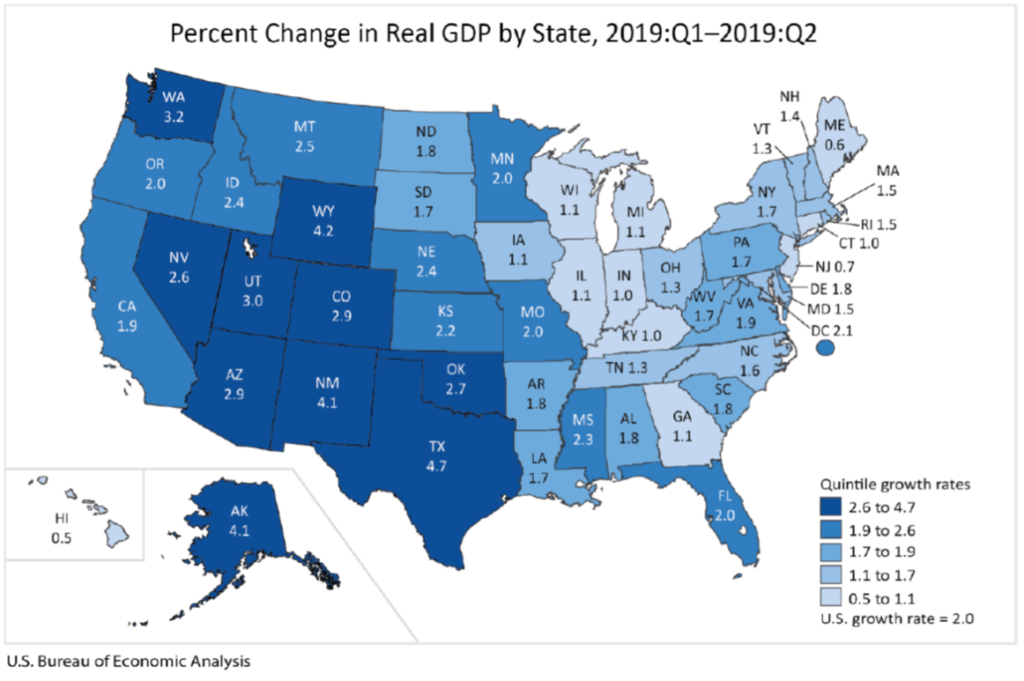Wyoming Second Fastest-Growing State in Second Quarter of 2019
GDP Growth Driven by Natural Resource Development
Casper, Wyo. – According to the United States Bureau of Economic Analysis (BEA), Wyoming experienced the second-fastest growth in GDP in the second quarter of 2019, with a 4.2 percent increase – just behind Texas (4.7) and ahead of Alaska (4.1) and New Mexico (4.1). The BEA cited natural resource development as the leading contributor to the economic growth in Wyoming, as well as in Texas, Alaska, and New Mexico.
“This report from the Bureau of Economic Analysis confirms what we already know here in Wyoming,” said Pete Obermueller, President of the Petroleum Association of Wyoming. “Resource development and specifically oil and natural gas, continues to be the primary driver of Wyoming’s economy. When the industry succeeds, Wyoming thrives.”
Over Q2 2019, Wyoming outpaced the rest of the Rocky Mountain Region. Utah was second in the region with a 3.0% increase in GDP. Nationally, all states grew in GDP ranging from 0.5% in Hawaii to 4.7% in Texas
Wyoming ranks 8th nationally in both oil and natural gas production. In 2018, Wyoming oil and gas employed more than 18,000 people. The industry also contributed $1.39 billion in revenues to the state – equating to a direct payment of nearly $2,605 for every Wyoming resident. These revenues contribute to services like public education, infrastructure, the University of Wyoming, and local city and town operations.
About PAW: Representing Wyoming’s primary economic engine, the Petroleum Association of Wyoming, is the voice of the oil and gas industry. Our members produce 90% of Wyoming’s oil and gas, generating over $5 billion in economic activity and employing more than 18,000 of Wyoming’s hard-working men and women. PAW strives to foster mutually beneficial relationships with Wyoming’s landowners, businesses, and communities while promoting the sustainable production of Wyoming’s abundant resources.
The Petroleum Association of Wyoming provides a forum for education, interaction, and unified action for members, policymakers, and the public.

